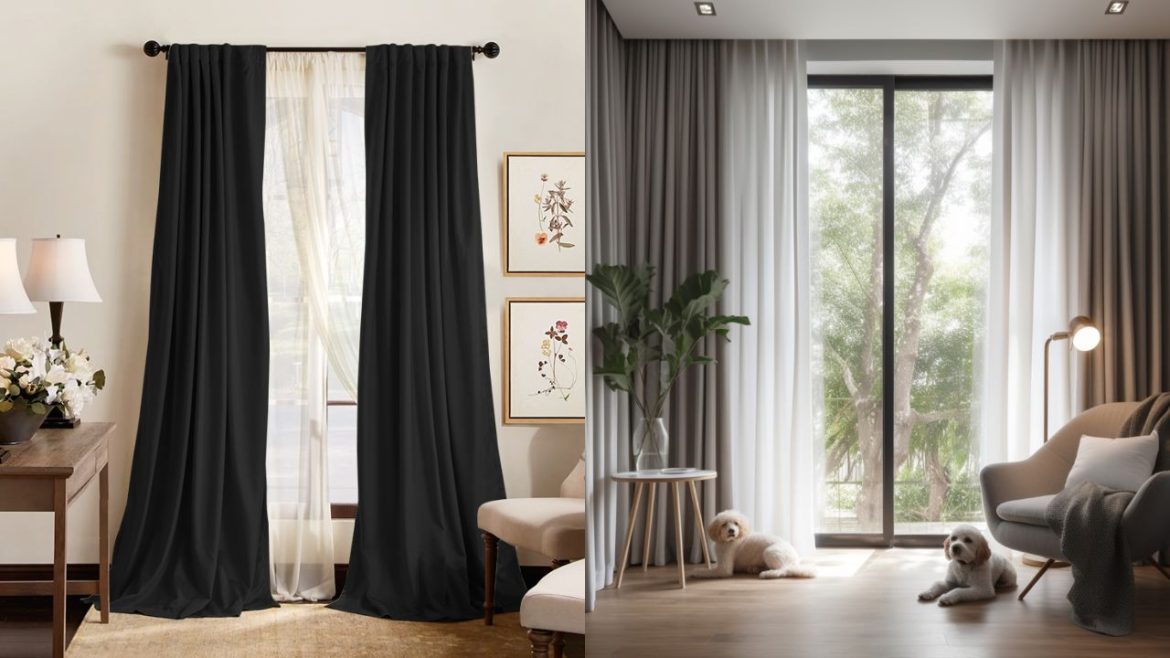Curtain layering is not only a trend that has emerged in interior design but also a practical solution that can enrich the appearance of a room and its functionality. Curtain layering is the key to achieving a fashionable and efficient look in any space whether you want to establish an opulent atmosphere, regulate light, or enhance insulation. This article focuses on thehuse custom blackout curtains that add a stylish and functional look to the house.
Base Layer Selection
The first thing that needs to be done in layering curtains is to choose the right ground layer. In most cases, the base layer comprises sheer fabrics that let light into the room while providing privacy at the same time. Sheer curtains can be made of voile, linen, or light cotton and can be of plain or slightly off-white color to match the rest of the furniture. For this layer, it is important to know about the light needed in the room.
Introducing the Second Layer for Style and Purpose
After the base layer has been established it is time to add the second layer which is usually thicker and less transparent. This layer can be made from velvet, jacquard, or thick cotton fabric material. The second layer is ornamental and practical, providing an extra layer of texture and color to the window treatment and an extra layer of privacy, light control, and warmth. This layer can be opened or closed according to the time and the kind of appearance that the owner wants to achieve. To get an opulent appearance, floor-length curtains that gather at the base should be ideal.
Adding Another Dimension for Flexibility
At times, there is an additional layer that can be incorporated to give the window treatment more uses and purposes. This could be a blackout curtain, ideal for bedrooms or home theaters where light is unwanted and has to be eliminated. In the third respect, the decorative valance or pelmet can be used to provide a formal and finished look to the window. While adding the third layer, avoid overpowering the existing layers while trying to add variety to the design. For instance, if the base and secondary layers are non-themed, the third layer may incorporate a pattern or a dash of color, which relates to some other aspect of the room’s design.
Layering Hardware Selection
The hardware that is utilized in hanging layered curtains is as important as the curtains themselves. For this purpose, it is possible to install double curtain rods that will enable one to easily move both the primary and secondary layers. Some of the designs have a triple rod system for those that are designed with a third layer. It is important to take into consideration the weight of the curtains while choosing rods and brackets. Thicker materials need stronger fasteners so that the garments do not droop over time when they are being hung. Also, finials, tie-backs, and rings may be used for decorative purposes and can complement the curtains even more.
Coordinating Colors and Patterns
One has to ensure that the curtains are well coordinated when one is putting them in layers. The layers don’t need to be similar in color. For the first layer, it is better to choose an item with a monochromatic color scheme. For the second one, it is possible to choose an item in a different color. If you want to be more adventurous, combine patterns – but make sure they are in the same color or at least related in some way.
Balancing Style with Function
In as much as layering curtains is a good way of giving style to a room, it should not be overemphasized to the extent of forgetting the practical aspect. It should be possible to make each layer have its function, for instance, light control, insulation, or texture. While layering, consider the functionality of the curtains when in use or during day-to-day activities. Are they to be used often, in other words, will you be opening and closing them frequently or are they more or less ornamental? Another factor that must be taken into consideration is that all the layers must be easy to manage and maintain if long-term satisfaction is to be achieved.
Conclusion
The use of layering curtains is a very effective way that can be used to change the appearance of a room. When choosing the base layer, secondary layer, optional third layer, and the color and pattern of the materials used, one can come up with a fashionable and practical window treatment. No matter if you want to create an opulent, warm, or minimalist interior, the proper curtains and rods will further complement the appearance and functionality of your interior.
